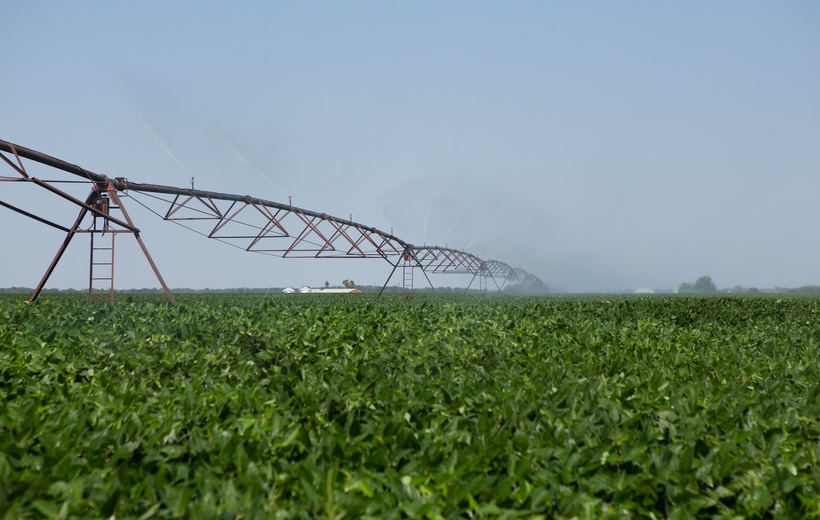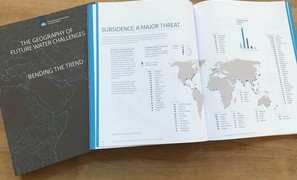Global trends in groundwater levels: good news and bad news

Irrigation accounts for 70% of global groundwater withdrawals (photo: United Soybean Board, www.flickr.com)
In many regions around the world groundwater levels are declining rapidly, at more than half a metre per year. These declines have accelerated over the past four decades in 30% of the world’s regional aquifers – groundwater reservoirs – particularly in aquifers underlying cultivated drylands. This was concluded from an analysis of measurements of groundwater-level trends in about 170,000 monitoring wells in world regions encompassing approximately 75% of global groundwater withdrawals. For the largest part this depletion results from excessive groundwater withdrawal for irrigation. Irrigation is estimated to account for 70% of global groundwater withdrawals. Climate change also plays a role.
This depletion can threaten land and fluvial ecosystems, through desiccation and streamflow depletion, damage infrastructure through land subsidence, reduce crop yields, and jeopardize water supplies as wells run dry.
Water table drops in most aquifers but rises in some
In 36% of the aquifers, groundwater levels dropped by more than 0.1 m per year; in 12% of the aquifers this drop exceeded 0.5 m per year. In 6% of the aquifers, groundwater level rose faster than 0.1 m per year; this rise was faster than 0.5 m per year in only 1% of them.
In 30% of aquifers, decline in water table is accelerating
For a third of the studied aquifers enough data were available to compare this century’s groundwater-level trends with the trends during the late twentieth century (1980–2000). The decline in groundwater levels accelerated in 30% of these aquifers, and this acceleration was fastest this century. Almost all these regions also experienced a decline in annual precipitation over time. A causal link between less precipitation and an accelerating drop of groundwater levels is obvious, either because of less recharge or because of increased groundwater abstractions to compensate for lower precipitation volumes.
These findings highlight an urgent need to address groundwater depletion.
Measures reducing decline are effective
On the positive side, the decline in groundwater levels decelerated or even reversed in 20% and 16% of these aquifers, respectively. This demonstrates that it is possible to slow, and potentially even reverse, groundwater-level declines by alleviating groundwater demand and artificially recharging overexploited groundwater reserves.
Still, the study shows that ‘cases of rapidly rising groundwater levels remain outnumbered by cases of rapidly deepening groundwater levels.’
Source: Jasechko et al., 2024. Nature 625: 715-721.






